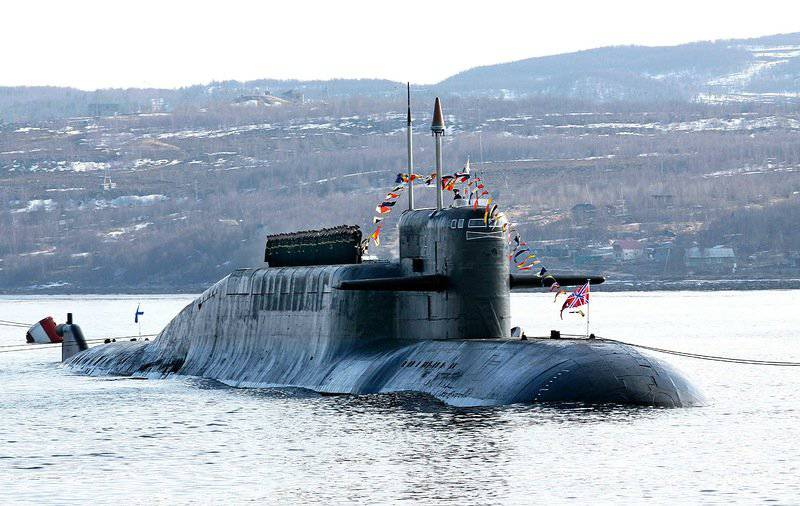"Liner" for strategic savings

“Liner”, so to speak, appeared suddenly. For the first time, it was told to the general public after the 20 of the year, the Yekaterinburg submarine, launched the 2011 in May and launched a new missile. “Liner” successfully hit conditional targets at the Kura landfill “Kura”. The second copy of the P-29RMU2.1 departed from the Tula boat and also destroyed the set targets in Kamchatka. After that, representatives of the Ministry of Defense and the GRC them. Makeeva announced the successful completion of the tests, and the rocket itself was recommended for adoption.
A fair question may arise here: two starts and everything, the tests are completed? Why so little? The same "Bulav" was launched several times more. The fact is that the P-30 “Bulava” rocket was created from scratch, and the “Liner” was the modernization of the existing P-29RMU2 “Sineva” rocket, the roots of which, in turn, go to the beginning of the 80’s, -29PM. Such a “family tree” of the P-29RMU2.1 has very pragmatic and even sometimes sad reasons. The original Р-29РМ was launched in the series back in 1986, but ten years later, due to the difficult economic situation in the country and new views on strategic submarines, their production was curtailed. Soon after the production of the P-29РМ was discontinued, work on the creation of a new modification of this rocket had to begin. The reasons are simple: the existing P-39 has almost expired storage time, and the creation of the B-12 P-XNUMHUTTH rocket was very difficult (as a result, it did not produce results - the project was closed in favor of the P-39 Bulava). It was necessary to close the “hole” in strategic armaments with something, because the existing P-30РМ sooner or later would have to be written off due to old age.
By the middle of the 2000-x, tests of the P-29РМ modification called Р-29РМУ 2 "Sineva" began. From the original rocket, it was distinguished by slightly different sizes, updated electronics and, as a result, great opportunities to overcome the enemy’s missile defense. In addition, it was possible to improve the accuracy of warhead guidance. In July 2007, the Sineva was put into service. However, the new rocket no longer fully met the requirements for such arms, and already in 2009-m in the SRC them. Makeeva began work on updating the "Blue". The P-29RMU2.1 “Liner” project meant the creation of a rocket that was as unified as possible with the “Blue” missile, which meets current and future requirements in the areas of payload and missile defense. In fact, the “Liner” is the “Sineva” with a new warhead. Thanks to this approach to modernization, it became possible to test a new rocket with just two launches.
It should be noted that the head part of the “Liner” is not so very different from the “head” of the P-29RMU2. Almost all of their differences are caused by the fact that the “Liner” can carry different load options - from ten warheads of low power to four medium. At the same time, in all configurations of the drop weight there are several blocks of means for overcoming missile defense: EW systems and false targets. According to the representatives of the SRC them. Makeeva, all missiles of the P-29 family are intended for use on the submarines of the 667BDRM Dolphin project. In order for the boat to use the new rocket, no structural changes are required - all retrofits consist in installing the Arbat-U2.1 control complex.
The main goal that was pursued during the creation of the Liner was to provide the project 667BDRM boats with modern weapons. These submarines will remain in service until at least 2020, and for some part of this period they will make up the bulk of submarines carrying strategic missiles. Accordingly, when a sufficient number of nuclear submarines armed with R-30 Bulava missiles are commissioned, the Dolphins can either be updated as much as possible or gradually withdrawn from service fleet. Of course, in order to "plug" a period of several years, the creation of a completely new rocket would be too expensive and complicated. By the way, about the financial side of things. Remaking the Sineva into the Liner will cost the military 40-60 million rubles, depending on the state of the rocket. There are also rumors that the State Rocket Center has considerations regarding the conversion of the old R-29RM into the Liner, but this information does not seem plausible. Firstly, the R-29RM and R-29RMU2 have many serious structural differences, and secondly, the service life of even the newest R-29RM is nearing its end and processing them to the “RMU2.1” state is simply not practical.
As we see, very soon a new missile will arrive in service with the Russian Navy, which, with tolerable financial costs, will be able to ensure the security of the country. So far, she will do it only until 2020, but it is believed that submarines of the 667BDRM project, regularly undergoing repairs and upgrades to various equipment, will be able to remain in service in the mid-twenties, if not further. By that time, the country's military-industrial complex will have to give the fleet a sufficient number of new Borey 955 submarines, and in the future a new missile, superior to both Sinevu and Liner, and Bulava.
Information